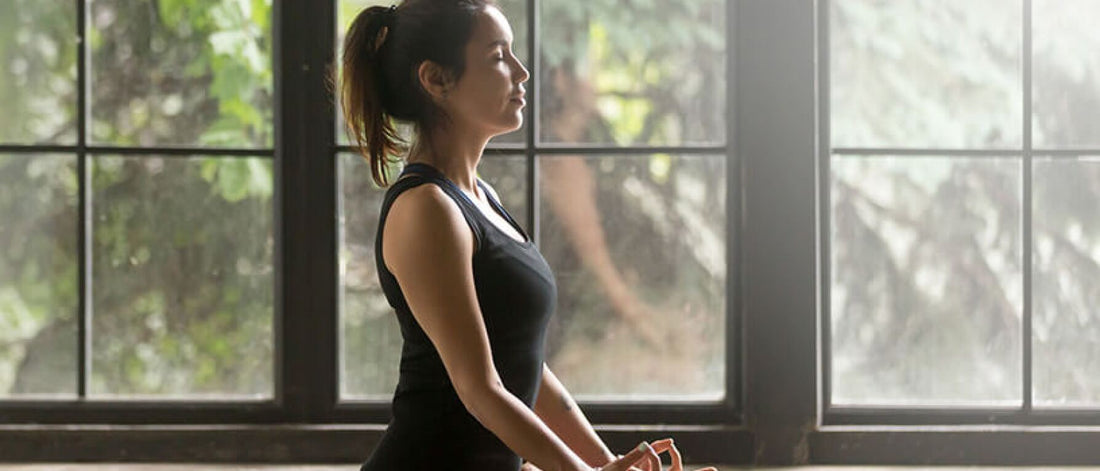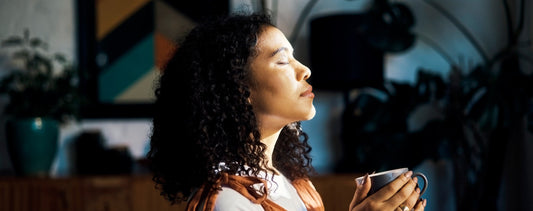Have you ever had a light bulb moment—a time when, out of the blue, you had a brilliant idea? Maybe it was a new solution to an old problem. Perhaps you felt inspired to create art, or you felt lyrics to a song flowing through you.
Have you ever wondered if your meditation practice could foster more of these moments?
My brightest ideas, like Compassion It, have come to me when my mind was wandering. This caused me to wonder: Does mindfulness hinder or help my creativity?
Creativity is not exactly a simple process, according to researcher Scott Barry Kaufman, PhD. In fact, he deems it “messy,” and writes, “The creative process—from the first drop of paint on the canvas to the art exhibition—involves a mix of emotions, drives, skills, and behaviors.”
In fact, a recent study indicates that you engage many parts of your brain during the creative process. You employ the brain’s default mode network, the part of the brain that kicks in when you’re not actively performing a task, and you use the executive function network.
According to Kaufman, the executive function network “is active when you're concentrating on a challenging lecture, or engaging in complex problem solving and reasoning that puts heavy demands on working memory.”
Feeling the warm sun on your face during a bright summer day, noticing the soothing water and soft lather as you wash your hands, or immersing yourself in your friend’s story—these are considered mindful moments.
Cultivating mindfulness typically involves reining in your wandering mind. For example, during many meditation practices, if you notice your mind starting to wander, you re-focus on your breath or present moment sensations to get rid of these thoughts.
Instead of using focused-attention meditation practices like breath-focused meditation, try practicing open-monitoring meditation.
In open-monitoring meditation, your mind is allowed to wander. Instead of trying to get rid of all the thoughts that may arise, bring nonjudgmental awareness to them and follow them with curiosity.
Interestingly, a recent study indicates an increase in divergent thinking, or the ability to generate new ideas, during open-monitoring meditation.
The study found that whether someone was new or seasoned at meditation, they experienced similar benefits from practicing an open-monitoring form of meditation.
Although open-monitoring may be a constructive meditation method in certain situations, don’t totally discount breath or sensation-focused meditations. Both can be part of the creative process, so stay open, and find what works best for you.
Now, let’s sit and get those creative juices flowing.
Have you ever wondered if your meditation practice could foster more of these moments?
My brightest ideas, like Compassion It, have come to me when my mind was wandering. This caused me to wonder: Does mindfulness hinder or help my creativity?
What Is Creativity?
According to Dictionary.com, creativity is defined as “the ability to transcend traditional ideas, rules, patterns, relationships, or the like, and to create meaningful new ideas, forms, methods, interpretations, etc.”Creativity is not exactly a simple process, according to researcher Scott Barry Kaufman, PhD. In fact, he deems it “messy,” and writes, “The creative process—from the first drop of paint on the canvas to the art exhibition—involves a mix of emotions, drives, skills, and behaviors.”
In fact, a recent study indicates that you engage many parts of your brain during the creative process. You employ the brain’s default mode network, the part of the brain that kicks in when you’re not actively performing a task, and you use the executive function network.
According to Kaufman, the executive function network “is active when you're concentrating on a challenging lecture, or engaging in complex problem solving and reasoning that puts heavy demands on working memory.”
Does Mindfulness Hinder Creativity?
Why would I think mindfulness might block creativity? Because mindfulness is typically defined as present moment and nonjudgmental awareness of thoughts, sensations, and emotions. In other words, when you are fully present, you are being mindful.Feeling the warm sun on your face during a bright summer day, noticing the soothing water and soft lather as you wash your hands, or immersing yourself in your friend’s story—these are considered mindful moments.
Cultivating mindfulness typically involves reining in your wandering mind. For example, during many meditation practices, if you notice your mind starting to wander, you re-focus on your breath or present moment sensations to get rid of these thoughts.
Promoting Creativity with Meditation
So, then, how can meditation enhance your creativity and not squash it? One way is to try a different type of meditation.Instead of using focused-attention meditation practices like breath-focused meditation, try practicing open-monitoring meditation.
In open-monitoring meditation, your mind is allowed to wander. Instead of trying to get rid of all the thoughts that may arise, bring nonjudgmental awareness to them and follow them with curiosity.
Interestingly, a recent study indicates an increase in divergent thinking, or the ability to generate new ideas, during open-monitoring meditation.
The study found that whether someone was new or seasoned at meditation, they experienced similar benefits from practicing an open-monitoring form of meditation.
5 Steps to Constructive Mind Wandering
Try practicing open-monitoring meditation with these five steps:Step 1
Begin by getting into a comfortable position that allows you to be both alert and relaxed. Close your eyes or look down and un-focus your eyes.Step 2
Take three deep breaths, filling your lungs to capacity and exhaling until your lungs feel empty.Step 3
Now breathe at a normal pace, noticing the feeling of your breath as it moves in and out of your nostrils.Step 4
Next, begin to follow your mind. Notice what you’re thinking about without judging your thoughts. Treat the process like you’re hosting a dinner party. As each new thought arrives, invite it to join you at the table.Step 5
After a set length of time (it may help to set a timer on your phone), slowly and gently bring your awareness back to the present moment.Although open-monitoring may be a constructive meditation method in certain situations, don’t totally discount breath or sensation-focused meditations. Both can be part of the creative process, so stay open, and find what works best for you.
Now, let’s sit and get those creative juices flowing.






















